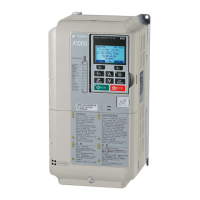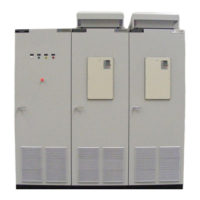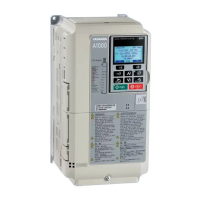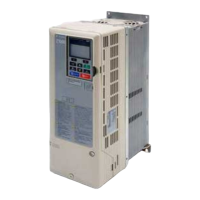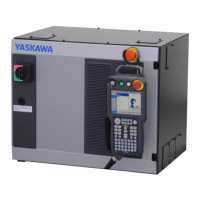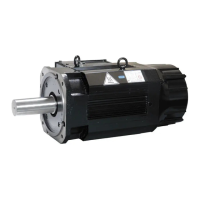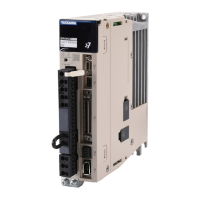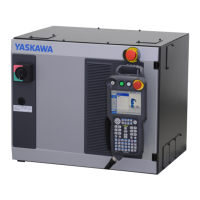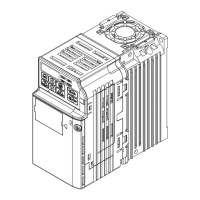■ L2-08: Frequency Gain at KEB Start
When the KEB Ride-Thru command is input, the output frequency is reduced in a single step in order to quickly get the
motor into a regenerative state. The amount of this frequency reduction can be calculated using the formula below. Note
that L2-08 can only be used with induction motors.
Amount of reduction = Slip frequency prior to KEB × (L2-08) × 2
■
L2-10: KEB Detection Time (Minimum KEB Time)
Parameter L2-10 determines how long KEB Ride-Thru must operate once it is triggered. Also refer to KEB Ride-Thru
End Detection on page 251.
■
L2-11: DC Bus Voltage Setpoint during KEB
Determines the setpoint (target value) for the DC bus voltage during Single KEB Ride-Thru 2. For Single KEB Ride-
Thru 1 and System KEB Ride-Thru, parameter L2-11 defines the voltage level to end KEB Ride-Thru.
■
L2-29: KEB Method Selection
Selects the way the Kinetic Energy Buffering function operates.
Note: If a multi function input is set for Single KEB Ride-Thru 2 (H1- = 7A, 7B) the setting of L2-29 is disregarded and the KEB
mode equal to L2-29 = 1 is automatically selected.
Setting 0: Single Drive KEB Ride-Thru 1
Setting 1: Single Drive KEB Ride-Thru 2
Setting 2: System KEB Ride-Thru 1
Setting 3: System KEB Ride-Thru 2
Refer to KEB Ride-Thru Function on page 249 for detailed explanations.
◆ L3: Stall Prevention
When the load is too high or acceleration and deceleration times are too short, the motor may be unable to keep up with
the frequency reference, resulting in excessive slip. During acceleration, this usually causes an overcurrent fault (oC),
drive overload (oL2), or motor overload (oL1). During deceleration, it can cause excessive regenerative power to flow
back into the DC bus capacitors, eventually causing the drive to fault out from overvoltage (oV). The drive can prevent
the motor from stalling and still reach the desired speed without the user needing to change the acceleration or
deceleration time settings. The Stall Prevention function can be set separately for acceleration, operating at constant
speeds, and deceleration.
<1> Setting range is determined by the accel/decel time units set in C1-10. If the time is set in units of 0.01 s (C1-10 = 0), the setting range becomes
0.00 to 600.00 s.
No. Name Setting Range Default
L2-08 Frequency Gain at KEB Start 0 to 300% 100%
No. Name Setting Range Default
L2-10 KEB Detection Time 0 to 2000 ms 50 ms
No.
<1> Values are for 200 V class drives and must be doubled for 400 V class drives.
<2> Default setting is determined by E1-01.
Name Setting Range Default
L2-11 DC Bus Voltage Setpoint during KEB 150 to 400 Vdc <1> <2>
No. Name Setting Range Default
L2-29 KEB Method Selection 0 to 3 0
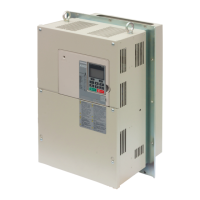
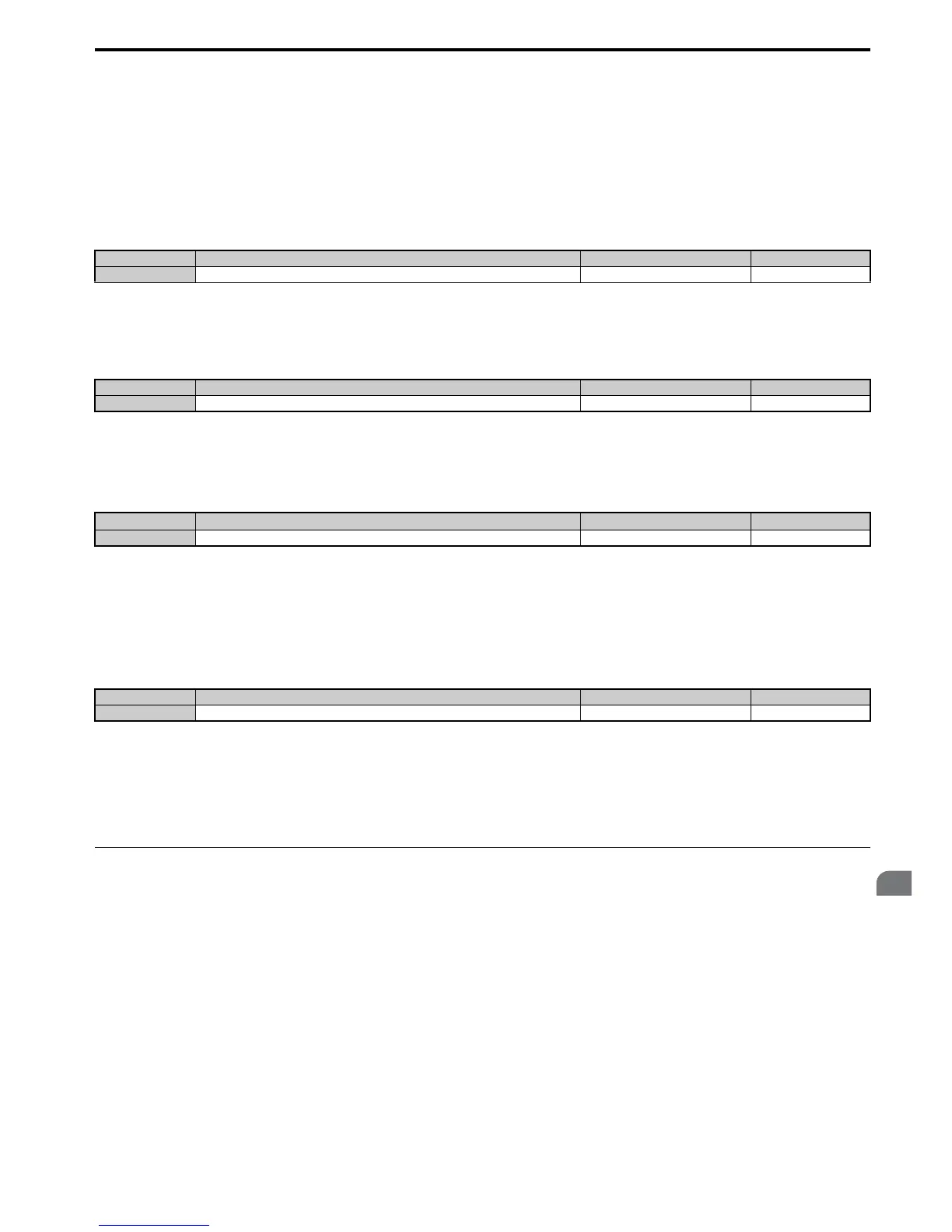